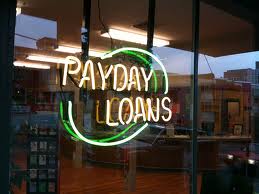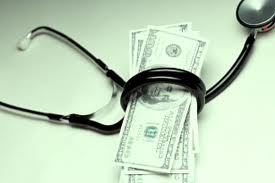By tothetick
It seems sometimes these days that we (or rather some out there) might have just forgotten the real definition of the word ‘debt’. So, for their benefit: in other words, ‘debt’ is an obligation to pay back or to render something to someone else for a service or good that has been provided. It’s a liability and an obligation, but the debt that we are running up (whether that be in the US or in the EU or elsewhere) doesn’t seem like it is ever going to be paid back. Have people forgotten what the word means or are they just blatantly flouting the rules and regulations that have been set up?
Wasn’t debt supposed to be a temporary measure that was meant to enable us to do things that we wouldn’t have otherwise been able to do? Yes, right! But, did it mean that we would give ourselves the permission to do whatever we wanted, however we wanted and never have to be answerable and liable for the money that was spent? Why are we even bothering to make make-believe reality by telling everyone that just round the next corner there is going to be some recovery lurking behind a tree waiting to jump out at us and say ‘yoo-hoo, I’m over here’? Trouble is the ‘yoo-hoo’ has turned into ‘boo-hoo’, hasn’t it? Shouldn’t we just go the whole hog and admit that we are not knee-high in that debt today, but that it’s up to our necks right this minute and that we are just not going to be able to pay it back, whatever happens?
We might have cut down in our own personal expenses in the past few years. The state has imposed austerity measures in the finger-wagging speeches that tell us ‘the coffers are empty, people…we have to do this, despite the fact that we want to do everything else’. Our states have gone bankrupt and the money has fled to healthier climes. If it hasn’t fled, it has been diluted into a wishy-washy mess of liquidity by pumping currencies into those economies to feed the thirst of the people, before they vote out the governments that is!
So, why are we still in debt? Why haven’t those governments changed what they promised to change and why haven’t they given us what they pledged they would do? Why, oh why, are we still in debt?
Student-Loan Debt
Debt: Student Loans
The average student-loan debt stands at $32, 054 today in the USA. That’s a total of $992.7 billion if we add all the student loans together. This is an increase of 7% in comparison with last year. So, more and more students are taking out loans, unable to pay their own way to go through further or higher education these days. The vast majority of that money (all but give or take about $150 billion that has been financed by private companies) is federal debt. There are about 37 million students that currently have loans and about 14% (an increase from 2012’s figure of 11%, which was already a 2.1% increase from the previous year) of those have defaulted on a repayment schemes (which is roughly $85 billion). About 41% are considered as delinquent (defaulting on their repayment plans) within the first five years!
Credit-Card Debt
Debt: Credit Cards
When people don’t have enough money to meet their daily needs they resort to credit. US credit debt stands at $15, 216 per household in 2013. Six months into the financial crisis of 2008 and the USA had reached its peak in terms of indebtedness of US households. Credit-card companies were cashing in on the crisis and providing easy (unchecked) access to credit. It was fast and simple. But, it was also bad for the economy. There was a fall from the heights of 2009, when credit-card companies were forced to write off debt for some households. But, credit-card debt stands at almost $700 billion today in the USA. Although, we have seen a fall in the first-quarter statistics for the delinquency rate (ratio of borrowers that are 90 days past their payment dates), with a national average of 0.69%. That’s down from 2012’s figure of 0.73%.
Payday Loans
Debt: Payday Loans
Payday loans are bigger business than they ever were in a bid to get around the austerity and the cut backs that are being imposed. For about $15 borrowers can get an advance on their pay checks and then agree to pay that back when they get their next one. There is about $39 billion that is being loaned out at any one time in this way in the US at the present time. Short-term cash-flow problems are currently being experienced by about 19 million households in the USA. Sometimes due to the fact that such loans are so short in length, households end up never being able to pay that money back and it just keeps rolling over. Except interest rates over a year might just end up working out for those households at the 400%-mark! That increases the debt-laden lives of people. But, hey can you blame them? They are taking the example that has been set by successive administrations for the past thirty-odd years.
Medical Debt
Debt: Medical Costs
According to statistics provided by the Commonwealth Fund (a nonprofit medical-research foundation), there are 24% of US citizens that are aged between 19 and 64 that currently have medical debts. 62% of those people that have credit-card debt put down medical expenses as part of their debt. Nearly two-thirds of those that are declared bankrupt households have medical bills that make up about half of their total debt.
Conclusions?
Before Ronald Reagan was elected President of the US gross national debt stood at under $1 trillion, which meant 33% of Gross Domestic Product. That soon changed as a new era of spending was ushered in.
Reagan added another 20% on to that bring debt to 53% of GDP (at $2.9 trillion). George H.W. Bush notched up another $1.1 trillion and brought the USA to debt of 64% of GDP. There was really no point stopping now, as the era of spending had begun, with no controls over the economy in a bid to make more money by throwing good (if ever there was good money, once upon a time) after bad in the hope that the former would pull it off. Needless to say that it didn’t since under Bill Clinton the USA had a national debt of $5.6 trillion. However, he did manage to reduce that in terms of a percentage of GDP (it fell to 56.5%), for the first and last time ever! By the time George W. Bush had finished with his stint in office, the USA had reached 77% of GDP in terms of national debt and it stood at $10.6 trillion. Under Barack Obama, the USA has seen that increase to 105% of GDP, and the country is nearing $17 trillion today. Outstanding public debt currently stands at $16.749 trillion today. That works out to $52, 970 per person in the USA, and the national debt is increasing by $2.44 billion every 24 hours (since last year). It seems very much like a disease that has no known cure at the moment. It will top $17 trillion by this fall according to analysts. Well, quite honestly, you don’t even need to be an analyst to know that we aren’t going to halt that debt between now and then.
So, either we allow our debt to accumulate more, or alternatively, the US government folds and refuses to spend a single cent for the next year, as well as raise takes by about 10% for everybody since the first would not be enough if done on its own. All of that money would then pay off the $17 trillion that the country has notched up over the past thirty-odd years. Obviously, the scenario is not going to happen, is it? So, we’ll opt for the first choice, and make out that we are going to pay it back, without ever actually having to do so!
But, is there any other solution? Surely, admitting that the debt won’t get paid back would lead to anarchy. What’s the point in working if the state can just print money and bail us out if it all goes south (or rather, east)? Admitting that our debt is so big today and that we are not going to counteract anything that is making that situation worse means that the only thing left at our disposal is to patch over the cracks with rice paper. Trouble is with rice paper, it’s see-through and never lasts.




No comments:
Post a Comment